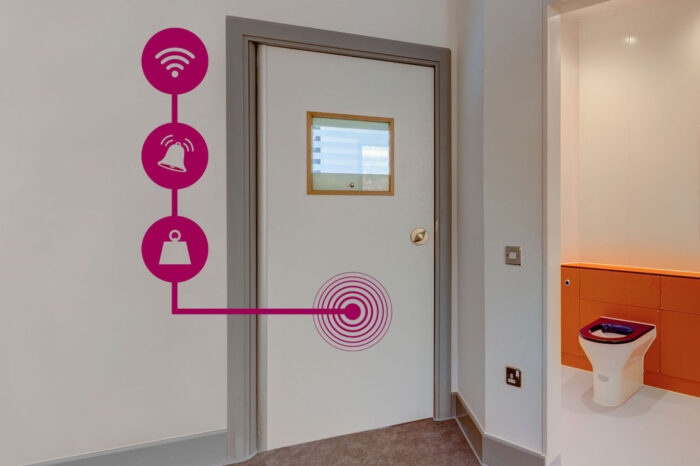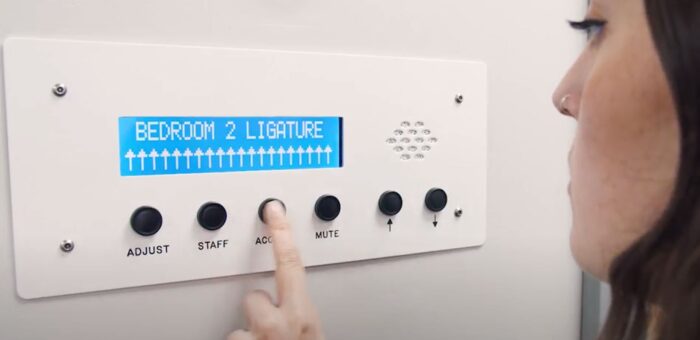When people are admitted to inpatient mental health care, they’re at a vulnerable time in their life. They need an environment that can keep them safe, but one that also supports their recovery.
Balancing safety with privacy and dignity is a challenge we often hear about from clinical staff. And with 90% of inpatient suicides taking place in bedrooms and communal bathrooms, there is a clear correlation between privacy and risk. These are key considerations for the built environment to support clinical staff in overcoming this challenge.

Addressing safety alerts
We often hear from clinicians that ligature risk is a moving target. If we remove the risk from the top of the door we just push it to the next area on the door.
In 2018, a national safety alert was issued highlighting that the ligature risk on doors is present at all heights – not just the top. Then shortly after in 2019 another safety alert was released questioning the efficacy of doors fitted with door-top alarms when a patient took their own life using the door latch.
With 46% of inpatient suicides occurring on doors – the most significant ligature risk in mental health – it’s likely that doors top your priority list.
Clinical feedback
We spoke with clinicians about their experience of door-top alarms to understand how we could improve the safety of doors. Here’s some of the insights we gathered:
- There’s a major ligature risk at the top of the door but this will evolve to other areas of the door over time
- Some experienced intentional false alarms with no distinction between false and real alarms – often causing tension in the patient/staff relationship
- The testing process is very visible, providing a ligature learning opportunity for patients
It’s looks clunky and institutional

Protecting people at vulnerable times
If we go back to the challenge of balancing safety with privacy and dignity, we realise just how much is expected of clinical staff. 91% of suicides occur under intermittent observation, yet with observations every 15 minutes, staff only have visibility for 3% of the day.
So, how can we protect people at vulnerable times?
The 2018 and 2019 safety alerts coupled with feedback from clinical staff has informed the design of our full-door ligature alarm. It turns the entire door into a weighing scale, detecting vertical loads of over 5kg applied to any part of the door and raising an alarm. Working alongside clinical care practices, the alarm is designed to minimise the blind spots between observations.
Representing almost half of ligature-based suicides, improving the safety of your doors is the single biggest impact you can make on patient safety.
In our recent webinar, we were joined by inspirational Expert by Experience Katharine Lazenby.
Passionate about using her time as a patient to improve mental health facilities, Katharine speaks openly about her own experiences and brings a fresh and honest perspective to designing recovery-led spaces.
Watch it here.
Other useful resources
During the webinar, we mentioned a few associated resources. You can find links to these below.
Design in Mental Health Network (DIMHN) is free for all NHS and mental healthcare providers to sign up for.
Safewards – an evidenced clinical and environmental model of proactively reducing flashpoints to create calmer wards
Contact Katharine Lazenby – LinkedIn
